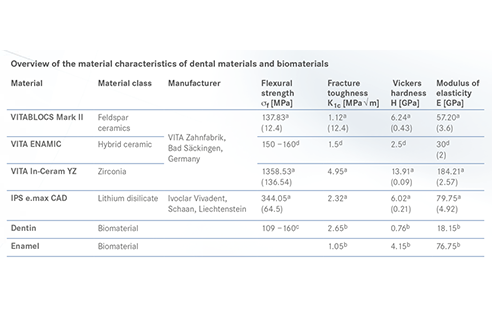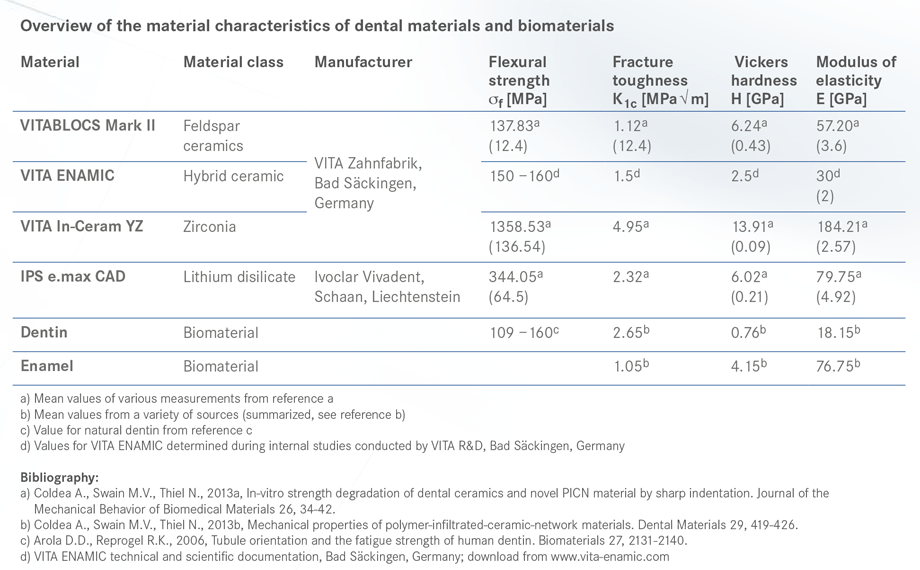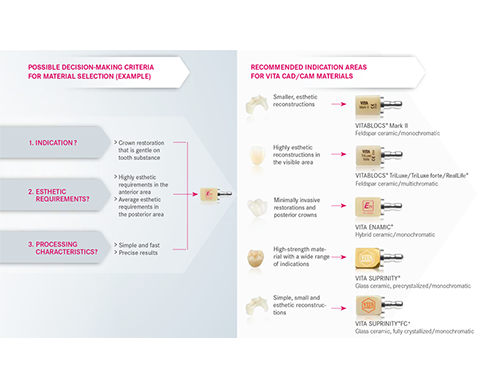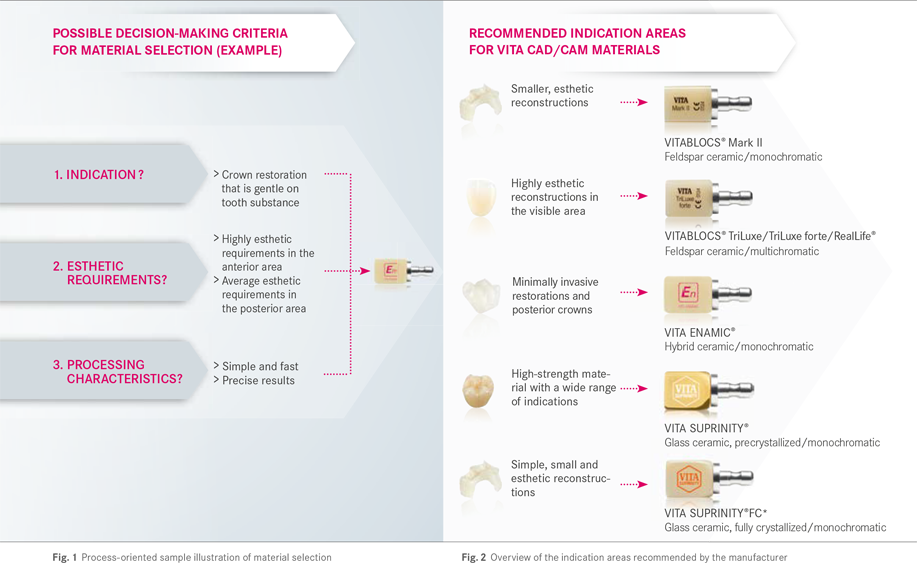CAD/CAM: is a variety of materials a blessing or a curse?
In this article, university professor Dr. Gerwin Arnetzl (Clinical Department for Prosthetic Dentistry of the University of Graz, Austria) looks at criteria for professional material selection. The central issue for many CAD/CAM practices and laboratories today is: is there a "right" material for every indication?
The market for all-ceramics is growing, and in addition to conventional feldspar and oxide ceramics, the dental industry is also offering innovative ceramics such as the VITA ENAMIC hybrid ceramic. Yet this variety of materials can be both a blessing and a curse: it has never been possible to differentiate more clearly than today when making a patient and case-specific selection. At the same time, it has never been more difficult to maintain an overview, as there are often several material solutions for a single class of indications. Dentists require appropriate knowledge of material science in order to decide which material is the right one. Personal preference can certainly play a role in this respect. However, simply specifying all-ceramic on the order form and thus transferring the responsibility to the dental technician is not a solution.
Benchmark for evaluation
Traditionally, flexural strength is often used as a benchmark to evaluate dental materials. However, from materials science we know that other parameters have an important role to play in clinical application. The performance of a test specimen (= "bending bars") during measurement of flexural strength can only provide limited information regarding the long-term clinical behavior of a material. For this reason, greater attention should be paid to material characteristics such as fracture toughness, Weibull modulus and modulus of elasticity.
Decision-making criteria
The first step in selecting a material is to consider whether a material that offers high stability is required for the posterior area or whether highly esthetic material is necessary for use in the anterior area. In principle, oxide ceramics such as VITA In-Ceram YZ, for example, are preferable for bridge frameworks, while multichromatic feldspar ceramics such as VITABLOCS TriLuxe forte are preferable in the anterior area. The decision is already a little more difficult in the case of implant-supported restorations. This is because comparatively high failure rates have been observed in the case of implant-supported restorations with conventional ceramics1. A hybrid ceramic can be beneficial in this case, such as VITA ENAMIC with its modulus of elasticity similar to dentin. Moreover, a hybrid ceramic can also be useful for critical indications such as post abutments in devitalized teeth and in patients with functional disorders. These types of restorations are, however, still at an experimental stage until sufficient clinical data becomes available.
Processing
As a general rule, material-specific requirements and process-related circumstances must be taken into consideration during preparation and design for every CAD/CAM material2. Adhesive cementation is mandatory for allceramics as the stability of the restoration is effectively doubled as a result of the adhesive bond3. If compromises are made during processing with the intention of saving time, the entire system will inevitably suffer as a result.
References
1 Brägger U., Aeschlimann S., Bürgin W., Hämmerle C., Lang N.P., Biological and technical complications and failures with fi xed partial dentures (FPD) on implants and teeth after four to fi ve years of function. Clin Oral Implants Res. 2001 Feb; 12(1): 26-34.
2 Arnetzl G., Arnetzl G.V., "Klinische Aspekte in der Vollkeramik" [Clinical aspects of all-ceramics]; published by VITA Zahnfabrik, Bad Säckingen, Germany; download from www.vita-zahnfabrik.com
3 Mörmann W. et al.; "Der Einfluss von Präparation und Befestigungsmethode auf die Bruchlast vollkeramischer Computerkronen" [The influence of preparation and the approach to cementation on the fracture load of all-ceramic computer crowns], Acta Med Dent Helv, Vol.3: 2/1998.






